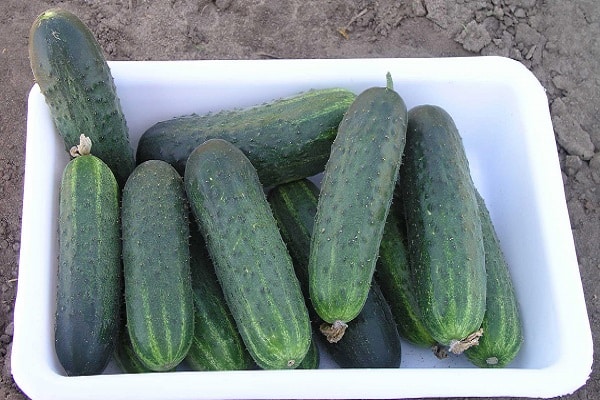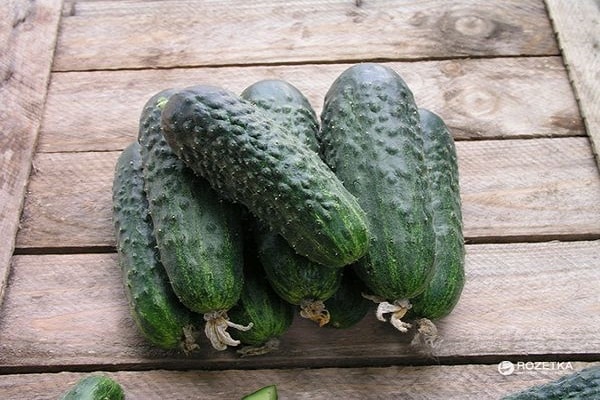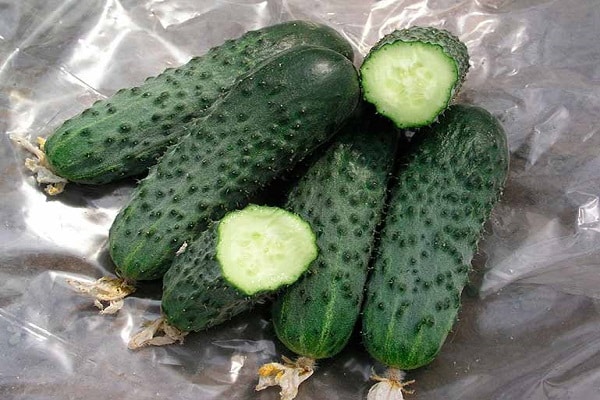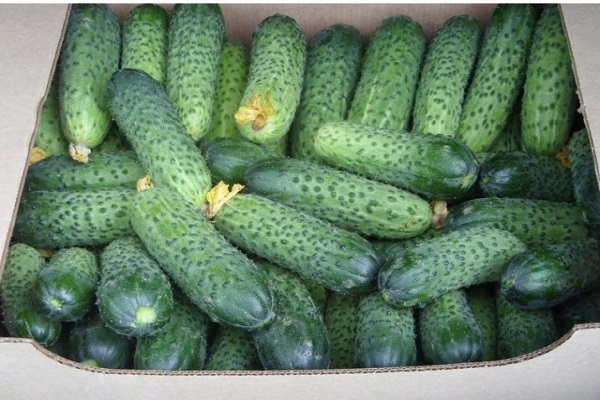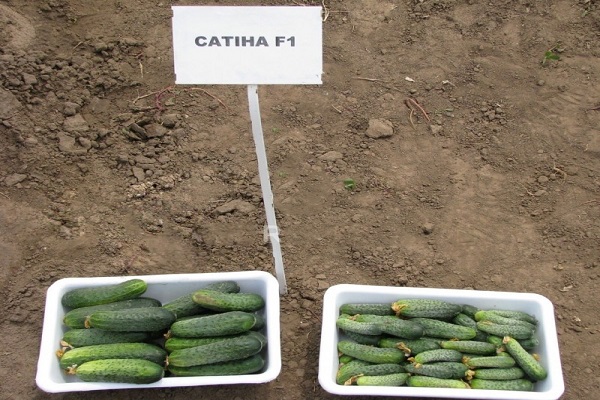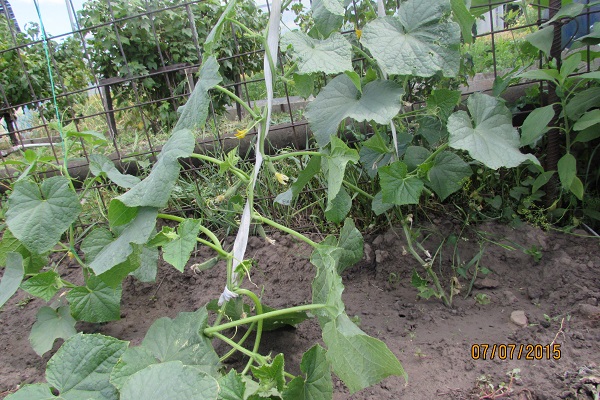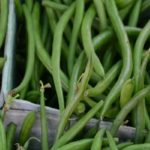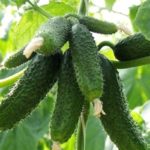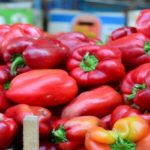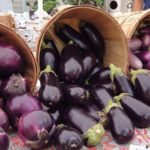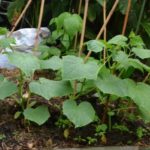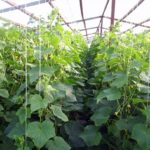Among the developments of Dutch breeders of the last decade, the Satin f1 cucumber takes pride of place. In the course of numerous experiments, the inventors managed to combine unpretentious care and high yield in the plant.
Description of the variety
Satina is a parthenocarpic indeterminate hybrid. Since the plant does not require pollination, the variety is grown indoors and outdoors. The length of the central conductor is 1.5 m. The bushes are well-leafed, medium vining. The flowers are predominantly female. The medium-sized leaves are green.
From the moment of seed germination to the harvesting of the first fruits, 35–45 days pass.The fruits are short and cylindrical in shape. The length of cucumbers at the stage of technical ripeness varies in the range of 10-12 cm, gherkins - 5-8 cm, pickles - 3-5 cm. Fruit weight 85-110 g. With proper care, 1 sq. m. beds is 4–4.5 kg. Farmers who grow the Satin f1 cucumber variety on an industrial scale manage to harvest 39 tons of fruit from 1 g.
The surface of the cucumber is covered with a thin dark green skin. At the lower end, the monochromatic color becomes lighter and is diluted with thin stripes 1–2 cm long. The fruit is covered with short white spines. The seeds are white and soft.
A ripe cucumber has a pronounced cucumber taste and smell. The pulp does not have voids and the bitterness inherent in the culture. Thanks to this feature, the fruits have a good presentation and are suitable for long-term transportation. The bushes are resistant to olive spot and cucumber mosaic. The fruits of the Dutch variety are suitable for fresh consumption and whole-fruit canning.
Growing and care
Seeds are sown in the garden after the soil temperature warms up to +13–+14C. The optimal depth of the furrows is 2–3 cm. For normal development of the crop, the distance between rows is 60 cm, and between plants - at least 15 cm.
The technology for growing cucumbers consists of the following manipulations:
- Picking. Seedlings are considered ready for planting in a permanent place at the age of 22–25 days or after the formation of 3–4 true leaves. Since cucumbers are very susceptible to damage to the root system, it is recommended to plant them using the transshipment method.
- Topping. There are quite a few methods for forming a vine, but the most effective is considered to be forming into one stem. To do this, the lower lateral processes are pinched off until their length is less than 5 cm.It is not advisable to carry out the manipulation at a later date, since the plant has already spent energy on maintaining them, and it will no longer be possible to achieve maximum yield.
- Watering. Moisten the soil around the climbing plants with slightly warm water in the evening once every two days.
- Feeding. Fertilizers for Satin cucumber are applied in accordance with the scheme established for all varieties of cucumbers. During the growing season, the bushes are fed with mineral or organic mixtures 2-3 times.
It is advisable to place the vegetable crop in an area with light, medium-loamy soils. The best predecessors for cucumbers - peppers, cabbage, onions, potatoes. To ensure that the fruits are well lit and grow quickly, the bushes are tied to vertical trellises.
Since the plant’s resistance to major cucumber diseases is good, there is no need to treat the bushes.
Reviews
According to the opinions of gardeners who grew the Satin hybrid on their plot, the description of the variety completely coincides with the characteristics of the bushes in reality. Vegetable lovers note the excellent taste of the fruit, high yield, and ease of care. The only thing that is needed for the plant to reveal the potential inherent during selection is regular watering, fertilizing and loosening.
Have you grown the Satina f1 variety? Have the above impressions been confirmed? Leave your reviews so that beginners and doubting gardeners can evaluate the merits of hydride and put it first on the list of crops to grow.

